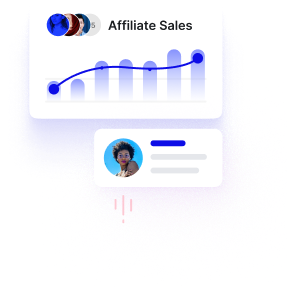Influencer Marketing Analytics: A Case Study on Scentbird Using Upfluence
As companies increasingly rely on influencer marketing to connect with consumers, robust tracking and analysis of influencer statistics becomes essential for maximizing the effectiveness of campaigns. Upfluence, a leading influencer marketing platform, offers a comprehensive suite of tools tailored to enable brands like Scentbird to track and analyze vital influencer statistics, hence driving better strategic decisions.
Tracking and Analyzing Influencer Statistics
Upfluence’s platform allows brands to gather extensive data on influencer activities and campaign performance, such as the key statistics seen with Scentbird’s campaign. For example, brands can monitor overall performance metrics including the duration of campaigns, the number of posts made, and the engagement rates achieved. In Scentbird’s case, they amassed 127 posts over three months, with an engagement rate of 0.0059, signaling areas for potential growth.
Key demographic insights, such as gender percentages (80.95% female to 19.05% male) and the geographical distribution of creators (majority from the US), allow Scentbird to understand its audience and tailor content appropriately. Additionally, Upfluence tracks media type performance—74.02% of their content was in reel format, suggesting a preference among their audience that Scentbird can leverage further. This granular data informs decisions about the optimal types of media to produce, optimizing content strategy to improve engagement.
Enhancing Influencer Marketing Strategy
Utilizing Upfluence’s analytics capabilities can significantly enhance Scentbird’s influencer marketing strategy across several dimensions:
1. Better Engagement: With insights drawn from engagement rates and cumulative interactions (like likes and comments), Scentbird can streamline its approach to influencer partnerships. By identifying which creators produced the highest engagement, Scentbird can focus future campaigns on strategies that resonate most with its audience. For instance, leveraging the top creators such as ‘jessescentials’ and ‘cateyes8164’ more prominently could cultivate deeper engagement levels.
2. Optimizing Media Types: The breakdown of media types used reveals that reels—popular for their dynamic and engaging nature—are driving the majority of interactions. By employing Upfluence’s recommendation tools, Scentbird could determine the optimal balance between carousel posts, images, and reels to maximize reach and engagement. This optimization is pivotal in a platform where visual content strongly influences consumer behavior, hence enhancing campaign effectiveness.
3. Identifying Top-Performing Creators and Countries: With Upfluence, Scentbird can maintain a comprehensive database of creator performance metrics, helping identify not just individual influencers but also geographic trends. Notably, the US has the highest engagement rate at 1.42%, while other countries show negligible interaction. By analyzing these statistics, Scentbird can target potential markets where influencer marketing might be underdeveloped but could thrive, adjusting their strategy to include influencers from those areas or concentrating efforts on engaging US-based creators.
Conclusion
In a world of ever-evolving digital marketing landscapes, leveraging analytics is vital for a successful influencer marketing strategy. By employing Upfluence’s data-driven capabilities, Scentbird can streamline its approach to influencer partnerships—optimizing content types, enhancing engagement rates, and targeting strategic geographic markets. Ultimately, meaningful analysis informs actionable insights, positioning Scentbird to maximize the impact of its influencer campaigns and strengthen brand visibility in an increasingly competitive market.






